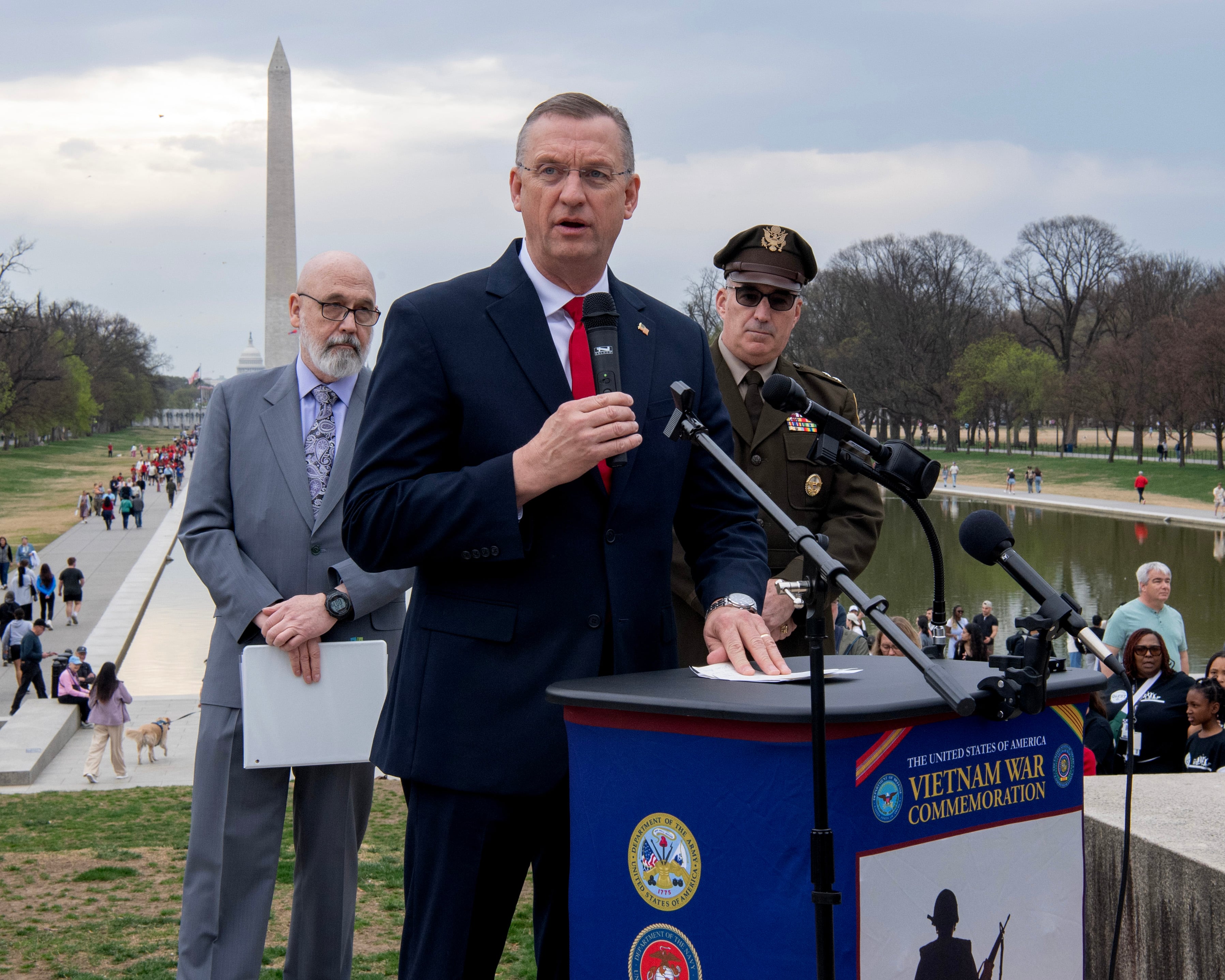Air Education and Training Command is digging in for the long haul of training airmen — and doing so safely — during a coronavirus pandemic that will likely continue for months to come.
In a Monday phone call with reporters, AETC leaders said they’re going to need to stay flexible and quickly adjust as the pandemic ebbs and flows.
Lt. Gen. James Hecker, commander of Air University at Maxwell Air Force Base in Alabama, said classes there can switch from in-person to virtual learning — whether on-site or remotely elsewhere — within a day if there’s a coronavirus outbreak or other emergency.
On the other hand, Hecker said, if conditions quickly improved after a theoretical outbreak at Maxwell, Air University could quickly move back to in-person learning the next day.
Adopting technology and virtual learning is helping Air University prepare for other emergencies, such as hurricanes. In the past, he said, a hurricane would force AU to send everyone home and several days of classes would be lost.
Just last week, when Hurricane Sally reached Alabama, Air University had its students stay home and attend virtual classes just to be safe, Hecker said.
“Having that agility to flex back and forth from in-residence, to virtual local, to virtual remote, has been really good and gives us a lot of flexibility based on whatever comes our way, whether it be COVID or other things,” Hecker said.
RELATED

Maj. Gen. Andrea Tullos, commander of the 2nd Air Force at Keesler Air Force Base in Mississippi, said one of her biggest projects now under way is expanding wireless internet capability at Keesler and Joint Base San Antonio-Lackland in Texas. Both dormitories and training facilities that previously weren’t deemed necessary to have wi-fi are getting the expansion, she said.
This improved wi-fi will allow trainees to stay in their rooms — whether due to the coronavirus or other flu outbreak, tornado warnings or other weather emergency — and continue to learn, Tullos said. Cadre instructors could also give trainees homework and send them back to their rooms to get it done with the additional wi-fi technology, she said.
“The beauty of some of the systems we have now is those instructors can actually monitor their work remotely," Tullos said. "They can see which students are struggling. They can go into chat rooms and offer them some feedback. And that allows them to focus on the students who are struggling, and so learners who aren’t struggling, move faster.”
These days, Tullos said, wi-fi is a utility that is just as necessary as power.
“There isn’t anywhere in our enterprise right now where there isn’t a need for the internet,” Tullos said.
Tullos said Lackland and Keesler reinvested money saved from other projects, as well as received additional funding from AETC, to outfit those facilities with wi-fi.
But, Hecker cautioned, not every lesson can be done as well virtually as in-person. For example, leadership courses, in which team-building is necessary to solve a problem, can be more difficult when people aren’t physically together and interacting directly, he said.
The 10-minute periods between classes, when students chat with one another and build relationships, are also largely lost in a virtual environment, Hecker said.
Tullos also said AETC is trying to promote a “culture of safety” during COVID to make sure the training pipeline stays open. That includes diligently wiping down surfaces and cleaning offices daily, she said, as well as monitoring people’s temperatures and physical conditions to watch for signs of infection.
It’s not all that different from operating in an environment with chemical weapons, she said.
The 2nd Air Force is finalizing plans to “sundown” a months-long experiment with running a second basic military training location at Keesler, Tullos said. That alternate location, which was launched in spring as the pandemic spread, was intended to supplement basic training operations at Lackland.
Keesler’s last BMT class will arrive the final week in September, Tullos said, and will graduate in November before Thanksgiving. AETC will then take 90 days to study how the Keesler experiment went.
If necessary, Tullos said, AETC could restart BMT operations at Keesler as early as next February.
“Right now, we don’t plan to need the added production at Keesler next year,” Tullos said. “But COVID gets a vote. If we have challenges and we see spikes and outbreaks and the CDC issues us guidance that causes us to lose our ability to use San Antonio as our full production flight, we’ll be prepared to reopen that capability and resume again next year.”
Stephen Losey is the air warfare reporter for Defense News. He previously covered leadership and personnel issues at Air Force Times, and the Pentagon, special operations and air warfare at Military.com. He has traveled to the Middle East to cover U.S. Air Force operations.




